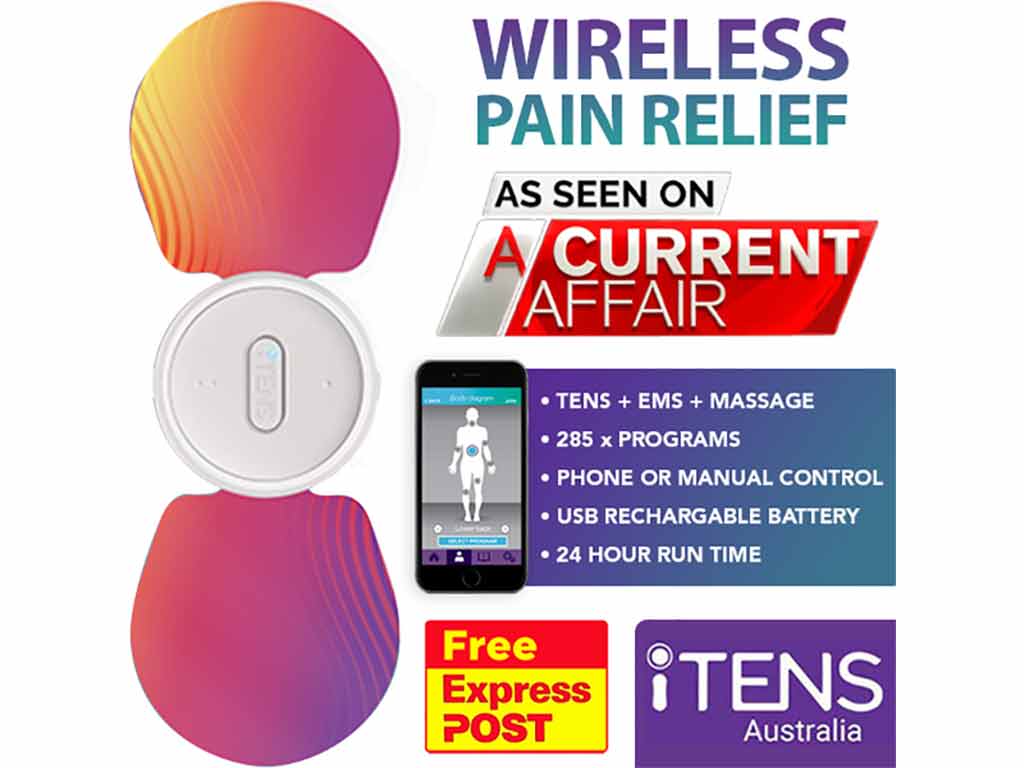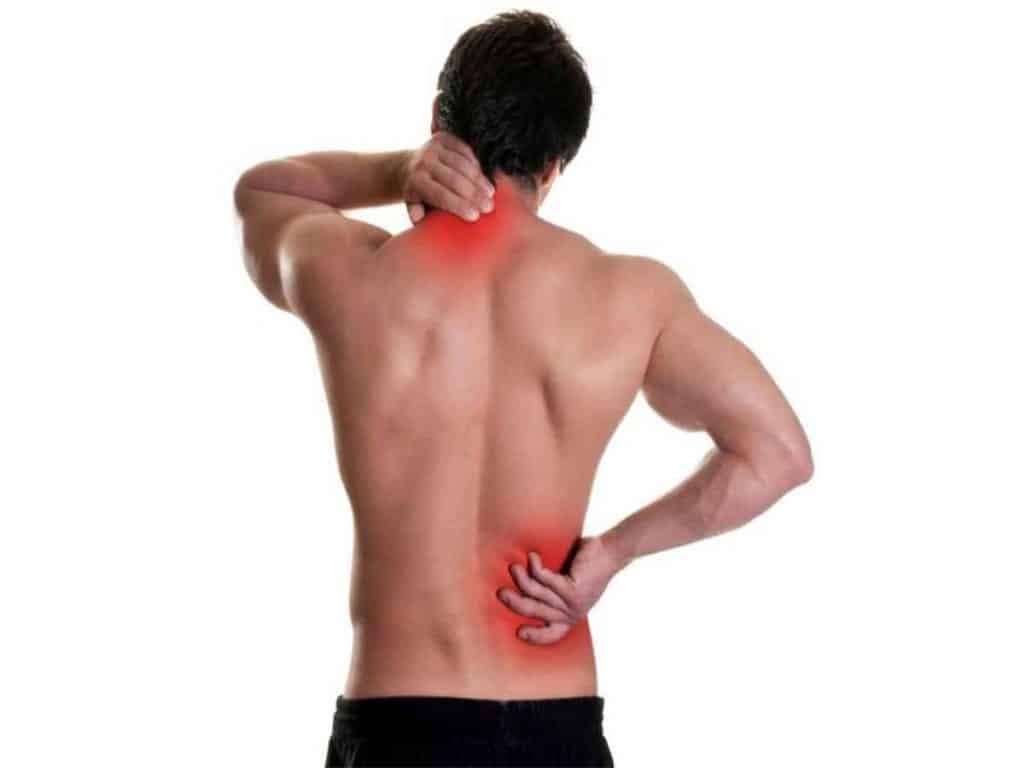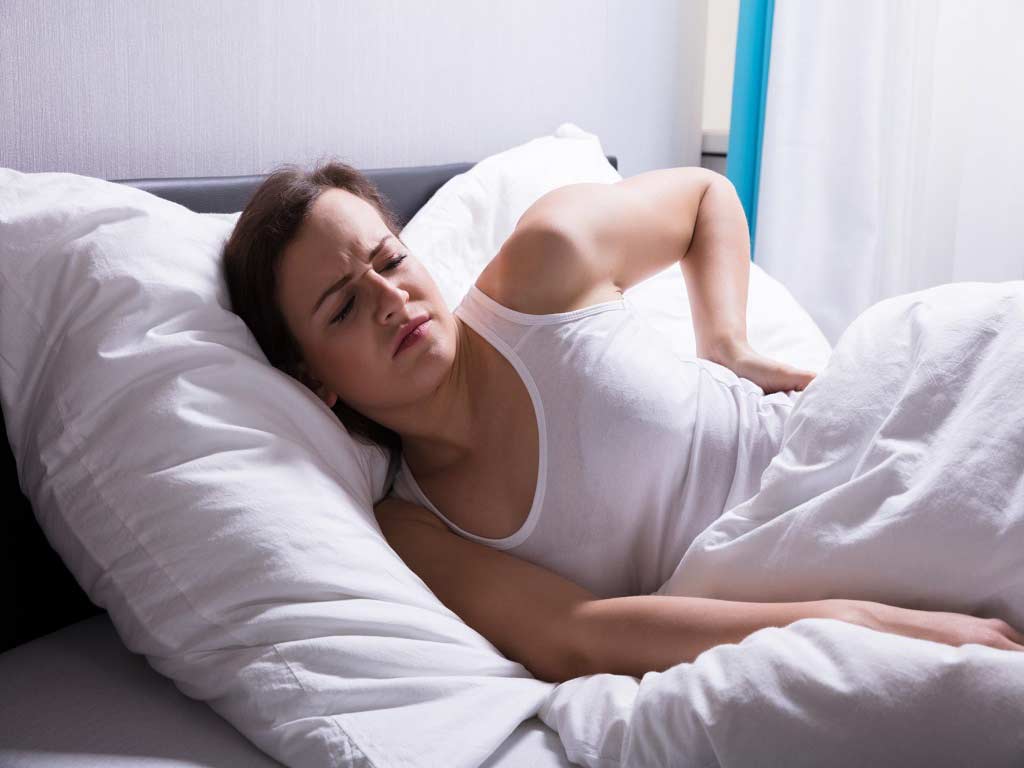
Electrical stimulation refers to the use of electrical currents to produce a therapeutic effect in the body. Most of the technique involves applying electrode pads to specific areas of the body, stimulating nerves and muscles to improve function, reduce pain, and promote healing. There are different types of stimulation, each targeting specific areas and achieving different outcomes. The most common types are Transcutaneous Electrical Nerve Stimulation (TENS) and Electrical Muscle Stimulation (EMS).
The use of electricity for physical therapy dates back centuries, but it was not until the late 18th and early 19th centuries that scientific understanding began to develop. It has gained popularity as a non-invasive treatment modality across various fields of medicine, rehabilitation, and sports performance. Nowadays, portable machines are available for personal or home use. This article provides an overview of electric stimulation, its different types, and how it works.
Jump to a Section:
- What Is Electrical Stimulation?
- How Does Electrical Stimulation Work?
- Types of Electrical Stimulation – TENS
- Types of Electrical Stimulation – EMS
- Types of Electrical Stimulation – ESTR
- Types of Electrical Stimulation – IFC
- Types of Electrical Stimulation – NMES
- Types of Electrical Stimulation – FES
- Types of Electrical Stimulation – SCS
- Types of Electrical Stimulation – Iontophoresis
What Is Electrical Stimulation?
Electrical stimulation (or e-stim) is a physical therapy technique that uses electrical currents to provide therapeutic relief. The currents stimulate the nerves or muscles in the body for pain management or rehabilitation. In addition, the stimulation machines use sets of electrodes to deliver these currents through the skin. Although there may be noticeable pulses or muscle contractions, they are relatively mild and safe when used correctly.
There are different types of electric stimulation techniques, each with specific purposes. These differences lie in the frequency or pulse rates, pulse duration, intensity, and waveforms. Thus, various combinations of the settings can target specific muscles or nerves and produce different effects on the body.
Traditionally, individuals can use electrical therapy by going to treatment centres or visiting their healthcare providers. Currently, people can use the machines in the comfort of their homes. Moreover, they are generally safe and do not require the supervision of a professional. However, it is vital to know how the devices work for effective use.
Benefits of E-Stim Therapy
- Drug-free treatment: E-stim therapy uses mild electrical currents to provide therapeutic effects. It does not involve medication, which can have adverse side effects for some individuals.
- Non-invasive: Most e-stim therapies are non-invasive and involve the use of electrode pads. Many may prefer this option because it is more comfortable and less risky than surgery and other medical procedures.
- Cost-effective: Individuals can purchase the device and use it as often as necessary. It has minimal running costs compared to going to a doctor or attending regular therapy sessions.
- Easy to use: E-stim devices are simple to use and can be easily operated at home.
How Does Electrical Stimulation Work?
Electrical stimulation works by sending electrical impulses through the body to stimulate nerves and muscles. When the electrode pads are placed on specific areas of the body, the pulses create a response in the nerves, causing them to send signals to the brain. This can help reduce pain, improve muscle function, and promote healing.
The devices have adjustable settings to customise the frequency, pulse width, and frequency. Depending on the currents or therapy, it can stimulate the nerves to block pain signals in the spinal cord from reaching the brain. Small electrical pulses can also trigger the release of endorphins for longer-lasting natural pain relief. Additionally, it helps boost blood circulation, which is essential for optimal health.
Electrotherapy also works on the motor nerves, mimicking the signals that the brain sends to muscles to make them contract. As a result, it induces involuntary muscle contractions and relaxation. The contractions are similar to physical exercise without the individual having to exert effort, making it beneficial for those with limited mobility or recovering from injuries.
What to Expect During E-Stim Therapy?
During e-stim therapy, individuals can expect to feel a tingling or buzzing sensation in the area at the site of electrode pad placement. There may be muscle twitches, depending on the intensity of the stimulation. This can be adjusted based on individual comfort levels or tolerance.
First-time users may find the feeling slightly uncomfortable, but it should not be painful. Furthermore, individuals may expect to feel pain relief or relaxation effects during or after the session. The effects of e-stim may vary between persons. If there are unusual side effects or concerns, it is essential to stop the therapy and consult a healthcare professional.
Types of Electrical Stimulation – TENS
One common type of electrical stimulation therapy is Transcutaneous Electrical Nerve Stimulation (TENS). This technique uses relatively lower frequencies targeting the sensory nerves. The electrical signals help to disrupt or block pain signals from reaching the brain, providing temporary relief. It also stimulates the production of endorphins, which are the natural painkillers of the body.
TENS therapy involves placing electrode pads on the skin near the pain area. Then, users adjust the settings depending on their type of pain or pain level. Moreover, there are two main types of TENS devices: conventional and acupuncture-like TENS. Conventional TENS uses low-intensity and high-intensity electrical currents to produce strong but comfortable sensations.
On the other hand, acupuncture-like TENS utilises high-intensity and low-frequency electrical currents over trigger points to produce extra segmental analgesia. Hence, it involves placing the electrodes on acupuncture points, providing pain relief unrelated to the origin of the pain. This is beneficial for certain pain conditions in sensitive regions, such as headaches.
Uses of TENS
TENS therapy is often used in physical therapy to treat various ailments, including acute and chronic pain conditions. Firstly, it can be beneficial for individuals suffering from long-term conditions or disorders. The common applications include treatments for arthritis, back pain, neuropathy, fibromyalgia, sciatica, and spinal problems.
The TENS machine can also help reduce pain and discomfort from acute conditions, such as sports injuries, muscle strains, and post-operative pain. It can also provide relief from cramping from period pain and labour pain. Additionally, TENS can provide relaxation or massage-like benefits to the muscles, relieving soreness and tension.

Types of Electrical Stimulation – EMS
Electrical Muscle Stimulation (EMS) is a type of electrical stimulation technique that uses higher frequencies to elicit muscle contractions. EMS targets the motor nerves, stimulating action potentials similar to voluntary exercises. The contractions aim to improve muscle strength and tone and increase muscle mass. It also helps to prevent muscle atrophy and promote healing.
EMS involves placing electrodes over targeted muscle groups. This can help to target weakened muscles for strengthening as well as reducing the risk of injuries. In recent years, the use of EMS devices has gained popularity as a tool for athletes and fitness enthusiasts looking to enhance their training regimens. Individuals may use before and after a workout to improve muscle performance, alleviate soreness, and reduce recovery time.
It is important to note that EMS machines are not replacements for physical exercise. Rather, they should be used as a supplement to a regular workout routine. Individuals should also consult their healthcare provider to assess their physical conditions before using the device.
Uses of EMS
- Muscle strengthening: EMS elicits involuntary contractions, helping to build muscle mass, re-training muscles, and improving function.
- Rehabilitation: It can aid in the recovery of injuries and surgeries by improving circulation and lymphatic drainage.
- Athletic performance: EMS helps enhance muscle endurance and reduce muscle soreness after intense workouts. It also helps restore muscle imbalances and posture.
- Weight loss management: Some individuals use EMS devices to boost metabolism and burn fat. However, it is most effective when combined with a healthy, balanced diet.
- Muscle spasm relief: The electrical pulses can help relieve muscle spasms and inflammation. This helps reduce tension and promote relaxation in the affected area.
Types of Electrical Stimulation – ESTR
Another type of therapy is the Electrical Stimulation for Tissue Repair (ESTR). This technique focuses on promoting tissue healing and regeneration. It has been shown to increase blood flow, essentially delivering more oxygen and nutrients for tissue regeneration. By stimulating the natural healing mechanisms, ESTR can accelerate recovery times and improve overall tissue function.
ESTR involves the application of low-intensity electrical currents to stimulate cellular activity and the release of growth factors. This type of stimulation can be beneficial for individuals recovering from injuries and surgeries. One of the benefits is its ability to target specific soft tissue injuries that may be difficult to reach through traditional treatment methods.
The therapy works by mimicking the normal body electric current to facilitate wound healing processes. It may involve placing the electrode on the outer margins of the pain site or near the afferent nerve fibres. However, it is vital to avoid surface areas with broken skin or lesions, as this can cause further cause damage to the wound.
Uses of ESTR
The main uses of ESTR are for injury recovery and post-surgery rehabilitation. Firstly, ESTR can aid in the healing process of damaged soft tissues, such as muscle strains and ligament sprains. By promoting cell regeneration and increasing blood flow, the therapy can speed up recovery time and reduce inflammation.
Secondly, individuals recovering from surgeries, such as tendon or joint replacements, can benefit from ESTR. Aside from tissue healing, it can help reduce scar tissue formation. Overall, it is a non-invasive tool for promoting healing and improving functional outcomes post-injury or surgery. Individuals can benefit from improved physical well-being.

Types of Electrical Stimulation – IFC
Interferential Current (IFC) therapy is a type of stimulation that uses two medium-frequency currents to treat pain. These currents intersect and interfere at specific points within the body, creating a therapeutic effect. This intersection creates a stronger electrical current that can target a larger area of tissue. Moreover, electrical stimulation can penetrate deeply to target the source of pain without causing discomfort.
The treatment involves applying two medium-frequency currents in a diagonal pattern on the skin. An IFC device can be adjusted, including amplitude-modulated frequency (AMF) and carrier frequency. These two currents can either work together or cancel each other out. Furthermore, IFC can help improve circulation and reduce swelling, allowing for greater pain relief and muscle relaxation.
The dual-channel mechanism of IFC enables precise control of stimulation intensity and targeting multiple areas simultaneously. In summary, IFC therapy is a drug-free option for managing pain and promoting deep-tissue healing. This type of treatment can help individuals regain function in areas affected by pain or injury.
Uses of IFC
IFC therapy has a variety of applications in pain relief. One of the main uses is for managing chronic pain conditions, such as arthritis, neuralgia, musculoskeletal issues, and circulatory disorders. This can reduce pain intensity and improve overall function. Additionally, it can be beneficial for acute injuries and post-operative pain.
Deep stimulation can help target tissues in localised areas, such as the neck, back, shoulder, and knee. It also promotes the healing of injured muscles and enhances neuromuscular control. With the guidance of a healthcare professional, IFC therapy can be a valuable tool in a comprehensive treatment plan.

Types of Electrical Stimulation – NMES
Neuromuscular Electrical Stimulation (NMES) is a technique that focuses on targeting the muscles to improve strength, endurance and coordination. This therapy involves applying electrical currents directly to the muscle tissue, causing them to contract. NMES can be used for both therapeutic and rehabilitative purposes. In addition, it is effective in preventing muscle loss and restoring mobilisation after an injury.
The therapy works by stimulating the motor neurons that innervate the muscles. This can help individuals to regain muscle strength and function after prolonged periods of immobility. Moreover, NMES can also enhance blood flow to the muscle, improving circulation and promoting healing.
Health professionals may recommend a pulse frequency of 20-50 Hz to optimise treatment. A pulse duration of 150-200 μs (microseconds) is ideal for small muscles, while 200-300 μs is for larger muscles. These settings can provide pain relief and stimulation while minimising discomfort or muscle fatigue. Individuals may facilitate NMES therapy for 20-30 minutes at a time and up to three times a week.
Uses of NMES
- Neuromuscular re-education: NMES helps restore normal movement patterns after surgery or injury.
- Oedema reduction: It improves circulation, flushing the accumulation of excess fluid in tissues. Therefore, it can help reduce swelling, particularly for those fluid retention issues.
- Increase range of motion: The increase in blood flow and muscle activation from NMES can help improve flexibility in joints affected by injury, stroke, or paralysis.
- Muscle strengthening: NMES can be used to target specific muscle groups for strength training, which is beneficial for individuals recovering from injuries.
- Coordination: Improve muscle function in individuals with orthopedic conditions like knee or hip replacements.
Types of Electrical Stimulation – FES
Functional Electrical Stimulation (FES) is a therapy that helps individuals with neurological impairments regain motor functions. It uses electrical pulses to cause muscle contraction, focusing on improving functional movements, muscle strength, coordination, and control. This can be especially beneficial for individuals who may have difficulty performing tasks due to a spinal cord injury or disorders.
FES stimulates the nerves that control muscles, causing them to contract and move in a controlled manner. This can help individuals with muscle weakness or paralysis to walk, reach, or grasp objects again. For example, people with foot drop may use the device to help them walk normally and with less effort. Other benefits include reduced risk of trips and falls and reduced spasticity and swelling.
The treatment involves placing small electrodes on the skin over the centre of a muscle. The stimulation usually starts at low levels, causing pin or needle-like sensations. Then, gradually increase until the muscles contract. FES is an effective and safe treatment for individuals with neurological disorders. It can help improve the quality of life, increase independence, and promote better health and well-being.
Uses of FES
FES has a wide range of uses in rehabilitation and physical therapy. One common use is improving motor function. It can help people recovering from stroke or paralysis regain coordination, such as increased mobility, strength, and endurance in the limbs. Another application is restoring bladder and bowel movement through sacral nerve stimulation.
This can benefit individuals with injuries, cerebral palsy, multiple sclerosis, and Irritable Bowel Disease (IBD). Furthermore, FES can aid in reducing muscle atrophy and preventing contractures in individuals who are bedridden or have limited mobility. Additionally, FES helps reduce discomfort in chronic conditions like fibromyalgia or neuropathy.

Types of Electrical Stimulation – SCS
Spinal Cord Stimulation (SCS) is a medical procedure that involves using an implantable device to deliver electrical impulses. The electrodes are placed between the spinal cord and the epidural space, and a pulse generator is near the buttocks or abdomen. Patients can then control the electrical stimulation using a remote control when they feel pain.
This therapy is typically used for individuals who have not found relief from conservative treatment methods. Moreover, the device is programmed to deliver electrical pulses at varying frequencies and intensities to achieve optimal pain relief. The electrical pulses essentially mask or disrupt the pain signals going to the brain.
While SCS can be an effective option, it is not a cure and may not work for everyone. Patients undergoing this procedure should be aware of potential risks and complications, such as infection and lead migration. Nevertheless, it can be helpful for people who do not respond well to other forms of treatment. A healthcare provider can run tests to determine suitable candidates.
Uses of SCS
SCS therapy is commonly used for managing chronic pain conditions, such as neuropathy, failed back surgery syndrome, or Complex Regional Pain Syndrome (CRPS). A failed back surgery syndrome is lumbar pain persisting after or despite surgical intervention. On the other hand, CRPS typically affects an arm or leg, usually after an injury or surgery.
Another common use of SCS is for angina and peripheral vascular disease. These are conditions where blood flow to the heart or limbs is restricted, causing pain and discomfort. SCS can help alleviate these symptoms by blocking pain signals and improving blood flow.

Types of Electrical Stimulation – Iontophoresis
Iontophoresis is a type of electrical stimulation therapy that involves weak electric currents passing through water. This treatment is commonly used to treat hyperhidrosis (excessive sweating), inflammation, and musculoskeletal pain. It works by creating an electric field that helps to drive charged molecules, such as medications, into the skin.
During the procedure, a medical professional or technician submerges the hand or feet of the patient in shallow water while the machine sends small electrical signals. Then, they gradually increase the current until the individual feels a tingling sensation. The treatment takes about 15-40 minutes and may need multiple sessions up to three times a week to see the results.
When considering iontophoresis, it is important to consult with a healthcare professional to determine if it is a suitable treatment option. Some considerations to keep in mind include the dosage of medication, the stimulation settings, and potential side effects or contraindications. Although rare, the side effects may include skin irritations, dryness, and blistering.
Uses of Iontophoresis
- Treat excessive sweating or hyperhidrosis.
- Deliver medication transdermally, effectively treating localised pain or inflammation.
- Relieve pain from nerve injuries like carpal tunnel syndrome or tendonitis.
- Improve blood circulation in the affected area.
- Treat overuse conditions like epicondylitis and plantar fasciitis.
- Reduce pain and discomfort from sports injuries and muscle soreness by delivering specific medications directly to the affected area.
- Treat fungal infection of the nail plate (onychomycosis).
- Use for scar reduction by promoting collagen remodelling and improving skin elasticity.
- Iontophoresis is also used in dermatology to deliver antibiotics or other medications for skin conditions such as acne or psoriasis.
Conclusion
In conclusion, electrical stimulation therapy is a valuable therapeutic approach for managing various types of pain and conditions. It involves the application of electrical impulses to the nerves and muscles. These impulses can be strong but mild enough not to cause further discomfort. It works by blocking pain signals, releasing endorphins, or stimulating muscle contractions. Additionally, there are different types of e-stim therapies appropriate for different conditions.
TENS and IFC work on the nerves for pain relief, while EMS, NMES, and FES target the muscles for strengthening and rehabilitation. Moreover, SCS involves a minimally invasive operation of implanting the device in the spinal cord. Lastly, iontophoresis is beneficial for delivering medications through the skin. It is vital to consult a professional to determine the best treatment option for specific needs. Following the guidelines of a healthcare provider can ensure safe and effective use.











